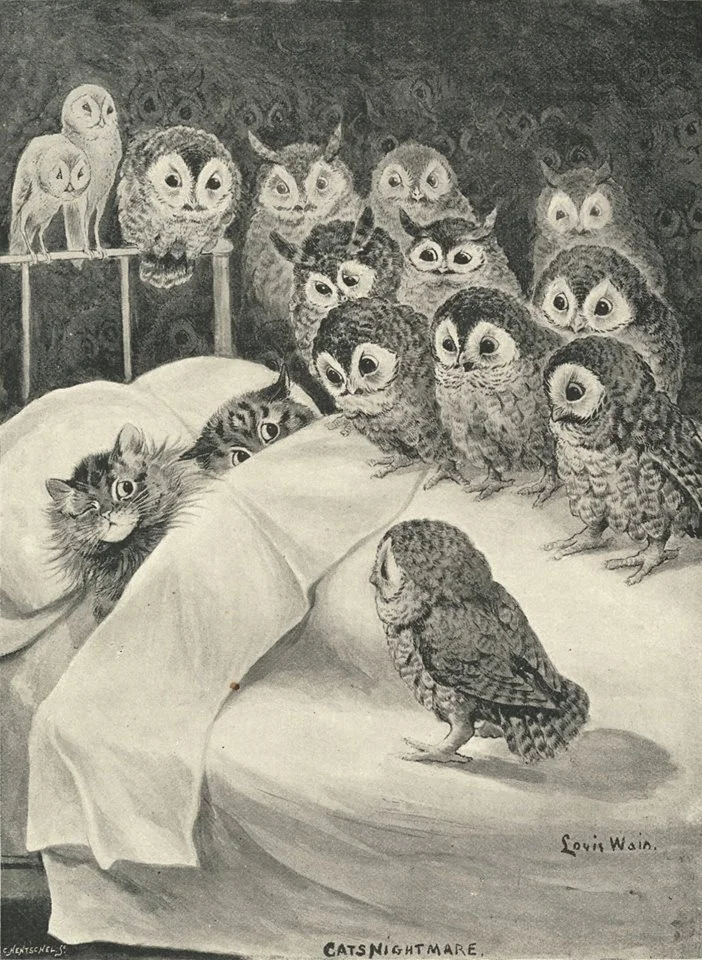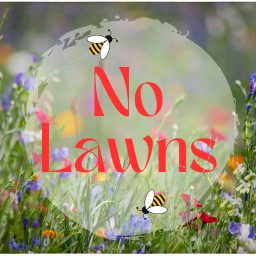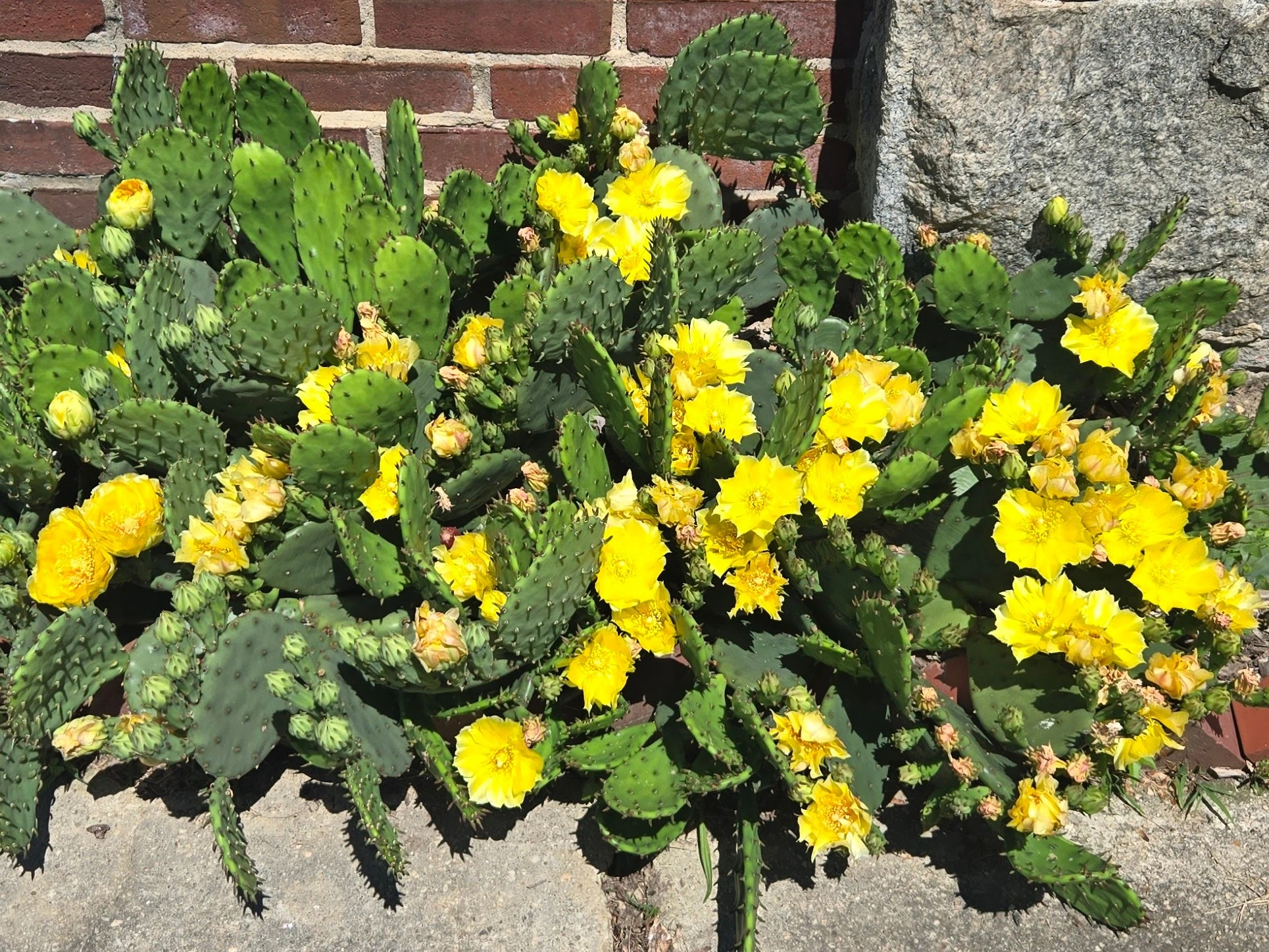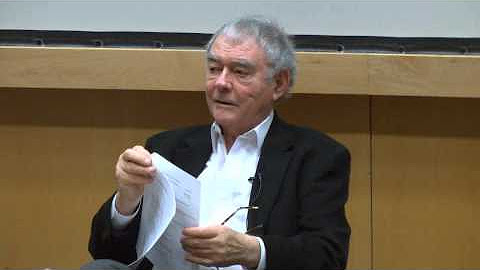- 19 Posts
- 20 Comments

 3·18 days ago
3·18 days agoCool beans 😉

 4·18 days ago
4·18 days agoI can help out with /c/food

 1·4 months ago
1·4 months agoThe local cottontail raised her litter in my yard and the family didn’t care for them, other than using them as a hangout spot. They did eat all the Virginia spiderwort and there’s a bunch of violet stems around with no leaves, but mostly they stick to the plantains (Plantago sp.) in the lawn.
I had no idea deer lived in the city until I started doing this. Sometimes I’ll catch one sleeping in my backyard which is a surreal sight. They munched the sunchokes, hazelnut, and chokeberry to the ground, but all are bouncing back.

 2·4 months ago
2·4 months agoMost of the flowers are divisions of plants, some volunteers and others I got as plugs in summer 2022. I decided to start small and expand over time. The coneflower was four plants last spring which I divided into 12, then into about 30 this spring. Rose milkweed and late boneset are just as prolific.
I have spread some seeds around and others have blown in. The groundcover in the second photo is all volunteer.
The mulch was leftover from a chipdrop. I used it to make the beds look “intentional” when everything was sparse and muddy back in February :) The plan is for everything to grow so dense that I won’t need to mulch it again.

 6·4 months ago
6·4 months agoThey don’t want most of the crap people plant trying to be Eco friendly anyways or so the landscape architect told me.
The research of entomologist, Dr. Doug Tallamy, and his team at the University of Delaware have identified 14% of native plants (the keystones) support 90% of butterfly and moth lepidoptera species. The research of horticulturist Jarrod Fowler has shown that 15% to 60% of North American native bee species are pollen specialists who only eat pollen from 40% of native plants.

 5·4 months ago
5·4 months agoDense plantings help keep it at bay. For flowers and grasses, cut in half the recommended plant spacing that you’ll find on gardening sites.
I have orange coneflower bordering a pocket prairie, planted one foot apart (center of plant to center of plant). Bermuda grass grows around the edge, but rarely enters it.

 5·5 months ago
5·5 months agoIt is done :)

 4·5 months ago
4·5 months agoI don’t mind teaming up if you’re still interested, it’d be nice to have some help.

 4·5 months ago
4·5 months agoNeat! No problem, thank y’all for all you do :)

 6·5 months ago
6·5 months agoI’d like to help with !nolawns@slrpnk.net

 3·5 months ago
3·5 months agoPlaces like Maryland did away with that nonsense. It is possible if neighbors are willing to come together and fight for it.
You’ve convinced me 👩🌾 the bees were all over them so there’s dozens of future fruits growing. I think these are at least two different species/hybrids given the variance in flower form and coloration. I’ll be neat if they taste different, too!
The pads are what I really want to try… the new growth looked so yummy lol. I read they taste like a mix of green beans and okra. Sounds delish.

 3·5 months ago
3·5 months agoWatching them flutter around the milkweed, over to my neighbor’s flowers, across the street and back again was beautiful. It was amazing to see one in person. They’re much larger than I imagined and very graceful.
Update! Today’s blooms:

All of my neighbors have grass on these narrow strips, maybe these cheery yellows will inspire them to plant some flowers instead.
I want to, but I’m too nervous about removing the glochids myself 😅 so not yet. Those fuzzy orange spots on the pads are no joke.

 5·7 months ago
5·7 months agoI never took care of the lawn other than mowing it, so much of this stuff was already here in small amounts. Two years ago, I started dividing up the violets and planting them into the grass. They launch seeds up to 4 feet so they quickly spread, clump and bully the grass. Ants move the seeds around too. Last year, I started dividing and transplanting the nimblewill. Panicled aster and late boneset volunteered which pushed out some more.
There’s still plenty of grass closer to my neighbor who treats their lawn. Some I buried in woodchips, the rest I’d like to shade out with edibles and dig out for another rain garden.

 4·9 months ago
4·9 months agoThey’re looking for ecoregion photos if you’re into photography!
If you want to learn more about your local plants and animals, I recommend iNaturalist or their Seek app.

 10·10 months ago
10·10 months agoBaltimore City has an adopt-a-lot program, allowing residents to use vacant lots for urban agriculture or community projects. However, as stated in point 3, it can be difficult to keep them going long term:
One farmer, Rich Kolm, said urban farms in Baltimore are playing several critical roles: They are community centers, educational hubs and fresh food producers in food-insecure neighborhoods.
Kolm has overseen three separate farms on adopted land in the city, and now he works as a contractor to those attempting to do the same. Though he commended the city’s low-cost water access service that accompanies lot adoption, he said people may not want to start a farm under the program if the land could be taken away.
“The whole idea of agriculture is that you’re building something,” said Kolm. “The only way to do it well is to make it permanent. But the city’s attitude is that urban agriculture might be a means of raising property values so much so that the agriculture gets kicked off the site.”





The link in the post body has some tips on how to do so responsibly. Might be worth sharing with your neighbors!